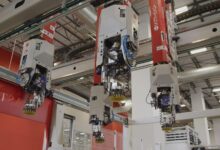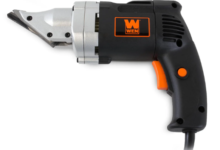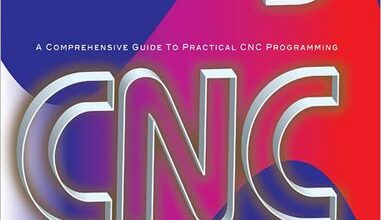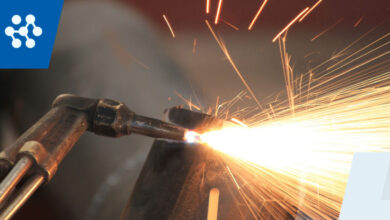Benefits of Modern Looms
Advertisement
Introduction
Modern looms have revolutionized the textile industry, making production faster, more efficient, and of higher quality. In this article, we will explore the various benefits that modern looms offer, from increased productivity to reduced waste. Let’s delve into the world of modern looms and discover how they are transforming the textile manufacturing process.
Strengths of Modern Loom Benefits
1. Increased Productivity:
Modern looms are equipped with advanced technology that allows them to weave fabrics at a much faster rate than traditional looms. This increase in productivity enables manufacturers to meet growing demand and fulfill orders in a timely manner.
2. Enhanced Efficiency:
With automated features and computerized controls, modern looms operate with minimal human intervention, reducing errors and maximizing efficiency in the production process. This streamlining of operations leads to cost savings and improved overall output.
3. Quality Assurance:
Modern looms are designed to produce fabrics of consistent quality, with precise weaving patterns and minimal deviations. This ensures that every piece of fabric meets strict standards and customer expectations, enhancing the reputation of the manufacturer.
4. Versatility:
Modern looms can accommodate a wide range of fabrics, from lightweight materials to heavy-duty textiles, making them versatile and adaptable to diverse production requirements. This flexibility allows manufacturers to explore new design possibilities and cater to various market segments.
5. Reduced Waste:
By optimizing thread utilization and minimizing errors, modern looms generate less waste during the weaving process, contributing to sustainability efforts and reducing environmental impact. This eco-friendly approach is a key advantage in today’s environmentally conscious market.
6. Cost-Effectiveness:
While the initial investment in modern looms may be higher than traditional looms, the long-term cost savings in terms of labor, time, and materials make them a cost-effective solution for textile manufacturers. The efficiency and productivity gains ultimately result in higher profitability and competitive advantage.
7. Innovation and Customization:
Modern looms are equipped with innovative features that allow for customization and experimentation with different weaving techniques, patterns, and textures. This creative freedom empowers designers to push boundaries and create unique fabrics that stand out in the market.
Weaknesses of Modern Loom Benefits
1. Initial Investment:
One of the main drawbacks of modern looms is the high initial cost of acquisition and installation. This upfront investment can be a barrier for small-scale manufacturers or businesses with limited capital, preventing them from adopting this advanced technology.
2. Maintenance and Training:
Modern looms require regular maintenance to ensure optimal performance, and operators need to be adequately trained to operate and troubleshoot these complex machines. The ongoing costs and training efforts can be a challenge for some manufacturers, especially those transitioning from traditional looms.
3. Technological Dependency:
Relying heavily on technology and automation, modern looms are susceptible to malfunctions or system failures, which can disrupt production schedules and result in downtime. Manufacturers need to have contingency plans in place to address technical issues promptly and minimize disruptions.
4. Limited Customization:
While modern looms offer customization options, they may have limitations in terms of intricate designs or specialized fabrics. Some complex weaving patterns or artistic creations may be challenging to achieve with standard loom configurations, restricting design possibilities for certain projects.
5. Energy Consumption:
Modern looms consume a significant amount of energy to operate, especially in large-scale manufacturing facilities with multiple machines running simultaneously. This energy consumption can lead to higher operating costs and environmental considerations related to energy usage.
6. Size and Space Requirements:
Modern looms are often bulky and require adequate space for installation and operation. Small-scale manufacturers or workshops with limited floor space may face challenges in accommodating these large machines, limiting their scalability and production capacity.
7. Competitive Landscape:
As more manufacturers adopt modern looms and leverage their benefits, the competition in the textile industry intensifies, creating pressure to invest in advanced technology to stay competitive. This dynamic market environment requires continuous innovation and adaptation to market trends to maintain a leading position.
Modern Loom Benefits Overview
| Benefits | Details |
|---|---|
| Increased Productivity | Faster weaving process, meeting demand. |
| Enhanced Efficiency | Automation, minimal errors, cost savings. |
| Quality Assurance | Precise weaving, consistent quality. |
| Versatility | Accommodating various fabrics, design flexibility. |
| Reduced Waste | Optimized thread usage, sustainability focus. |
| Cost-Effectiveness | Long-term savings, higher profitability. |
| Innovation and Customization | Creative freedom, unique fabric designs. |
Frequently Asked Questions
1. Are modern looms suitable for all types of fabrics?
Modern looms are versatile and can handle a wide range of fabrics, from lightweight to heavy-duty materials. However, some specialized fabrics may require custom configurations.
2. How can I maximize the efficiency of modern looms in my manufacturing process?
By implementing regular maintenance schedules, proper training for operators, and optimizing workflow, you can ensure peak performance of modern looms.
3. What are the key factors to consider when investing in modern looms?
Factors such as production capacity, customization options, maintenance requirements, and budget considerations should be evaluated when choosing modern looms for your facility.
4. Can modern looms help reduce waste and promote sustainability?
Yes, modern looms are designed to minimize waste through optimized thread utilization and efficient weaving processes, contributing to sustainability goals.
5. How do modern looms compare to traditional looms in terms of productivity?
Modern looms outperform traditional looms in terms of speed, efficiency, and overall productivity, making them a preferred choice for many textile manufacturers.
6. What training is required for operators to handle modern looms effectively?
Operators need to undergo specific training programs to learn how to operate, maintain, and troubleshoot modern looms, ensuring smooth production processes.
7. Can modern looms accommodate complex weaving patterns and designs?
While modern looms offer customization options, some intricate designs may require specialized configurations or additional accessories to achieve specific patterns.
8. Are modern looms suitable for small-scale textile producers?
While the initial cost may be a barrier, modern looms can benefit small-scale producers in terms of efficiency, quality, and design capabilities, enabling them to compete effectively in the market.
9. How can modern looms contribute to enhancing the quality of fabrics?
By ensuring precise weaving patterns, consistent quality control, and reduced errors, modern looms play a crucial role in enhancing the overall quality and aesthetics of fabrics produced.
10. What are the long-term cost savings associated with modern looms?
The efficiency gains, reduced waste, and increased productivity offered by modern looms result in significant cost savings over time, leading to improved profitability for manufacturers.
11. How do modern looms address environmental concerns related to the textile industry?
Modern looms promote sustainability by minimizing waste, optimizing resources, and reducing energy consumption, aligning with eco-friendly practices in textile manufacturing.
12. Can modern looms adapt to changing market trends and customer demands?
With their versatility and customization options, modern looms enable manufacturers to quickly respond to market changes, introduce new designs, and meet evolving customer preferences.
13. What role do modern looms play in driving innovation in the textile industry?
Modern looms empower designers and manufacturers to experiment with new weaving techniques, materials, and textures, fostering creativity and innovation in the textile sector.
Conclusion
In conclusion, the benefits of modern looms are undeniable, offering textile manufacturers a competitive edge in terms of productivity, efficiency, quality, and innovation. While there are challenges associated with adopting this advanced technology, the long-term advantages far outweigh the initial investments, leading to improved profitability and sustainability in the textile industry. It is essential for manufacturers to embrace modern looms and leverage their capabilities to stay ahead in a rapidly evolving market landscape.
Explore the possibilities of modern looms and unlock the potential for growth and success in textile manufacturing. Embrace innovation, sustainability, and quality with the power of modern looms.
Take the next step towards transforming your production processes and revolutionizing your fabric designs with modern looms. Join the ranks of leading textile manufacturers who have embraced this cutting-edge technology and secured their position as industry leaders.
Don’t miss out on the incredible benefits that modern looms have to offer. Invest in the future of textile production, elevate your brand reputation, and meet the demands of the modern market with the help of modern looms.
Make the smart choice for your business and experience the transformative impact of modern looms on your operations, profitability, and overall success. Start weaving a brighter future today with modern looms.
Unlock the full potential of your textile manufacturing processes and elevate your products to new heights with the unparalleled benefits of modern looms. Embrace innovation, efficiency, and quality with the power of modern looms.
Seize the opportunity to revolutionize your textile production and achieve new levels of success with modern looms. Stay ahead of the competition, meet customer demands, and drive profitability with the advanced capabilities of modern looms.
Disclaimer
This article is for informational purposes only and does not constitute professional advice. The information provided in this article is based on general knowledge and industry practices related to modern looms. Readers are advised to conduct their own research and consult with experts before making any decisions regarding the adoption of modern looms in their manufacturing processes.







